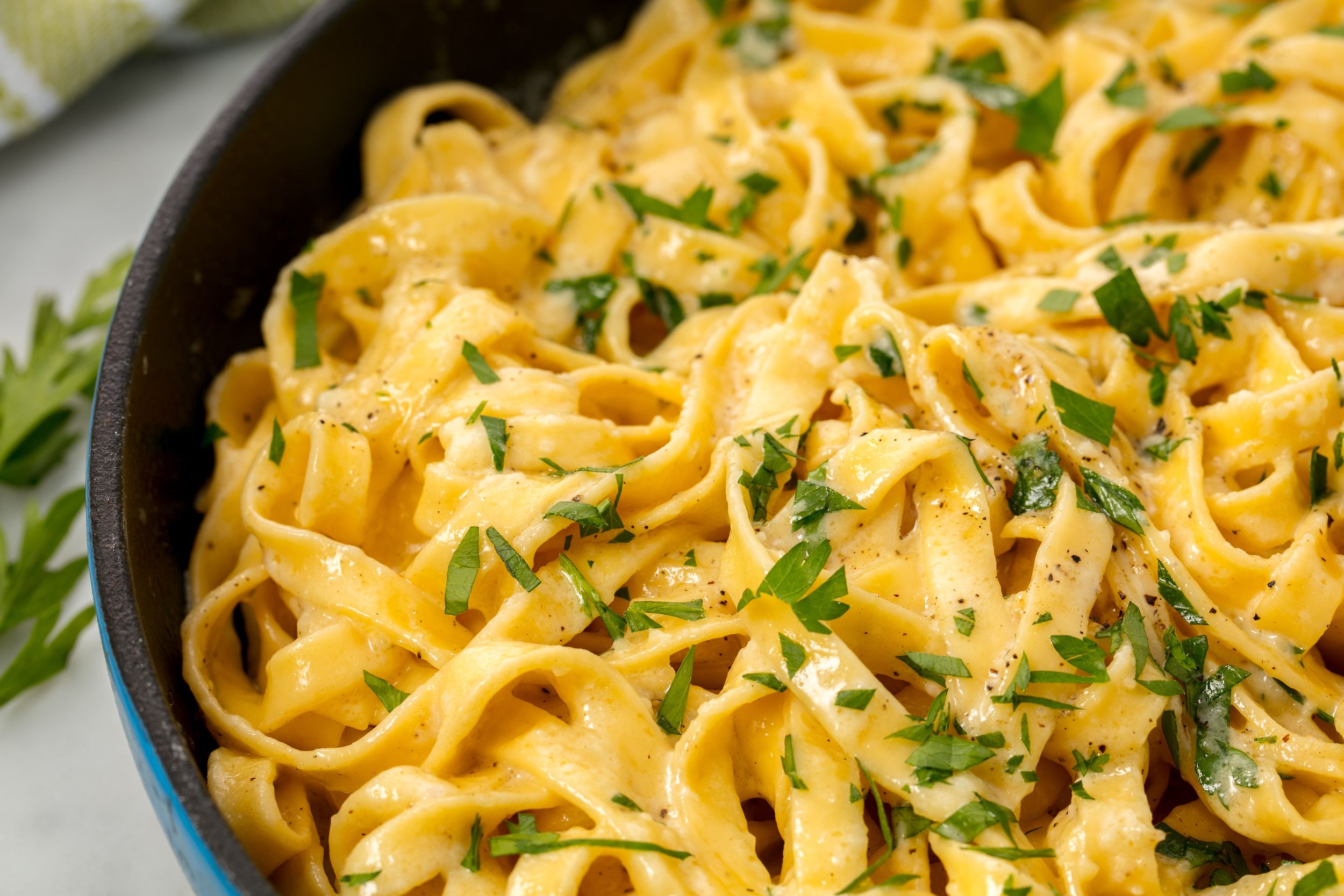Linguine vs. fettuccine. With so many different kinds of pasta, it seems impossible to tell them apart. Is there really any difference when it comes to these two very similar types of pasta? At first glance, it might seem as if these two types of long pasta have little to differentiate from one another; however, for a true pasta aficionado, they couldnt be more different!
If youve started to make your own homemade pasta using a pasta maker, then youll have started to realize that there are plenty of subtle differences between linguine vs. fettuccine. They are not only different in thickness and shape but are best cooked with different sauces and accompaniments.
The deeper you dive into the intricate world of pasta, the more you begin to appreciate how these subtle differences work in the kitchen. Today, lets take a look at the difference between linguine and fettuccine!
Linguine is quite similar to fettuccine. Its also similar to spaghetti, tagliatelle, and many more kinds of pasta!
So what makes linguine unique? Linguine noodles are a type of long pasta with a distinctive elliptical shape. Rather than being flat like fettuccine or tagliatelle, linguine is more rounded, like spaghetti. But linguine isnt nearly as thin as spaghetti; in fact, its somewhat thick (think of linguine as thick spaghetti, if you will).
Like most pasta, linguine originates from Italy. In the Italian language, linguine means Little Tongues, a reference we suppose, to the pastas distinctive shape and look. This type of pasta was first popularized in the Liguria region, in the northwest of Italy. Head to the regions capital, Genoa, for genuinely authentic linguine.
Fettuccine is even thicker than linguine. And rather than being elliptical, it has a distinctively flat, thick look to it. Hold some fettuccine next to some linguine, and you can instantly tell which is which by the thickness and flatness of the piece of pasta.
Fettuccine means Little Ribbons in Italian, a reference to the ribbony texture that the thick strands of pasta take on when cooked. Fettuccine is most commonly found in Rome and Tuscany. The famous dish fettuccine alfredo (fettuccine cooked in butter and parmesan) is the dish that made this type of pasta well known in the early 20th century.
Best served with: Wide, flat fettuccine is perfect for creamy sauces like lush, cheesy alfredo or a creamy tomato or vodka sauce—since the noodles have more surface area, it’s easier for heavier sauces to adhere and make it to your mouth.

GET AN EXTRA 15% OFF OUR FAJITA SKILLET SET!
Use the code 15FAJITA at checkout on Amazon
Fall in love with fajitas!
Linguine vs. fettuccine. With so many different kinds of pasta, it seems impossible to tell them apart. Is there really any difference when it comes to these two very similar types of pasta? At first glance, it might seem as if these two types of long pasta have little to differentiate from one another; however, for a true pasta aficionado, they couldnt be more different!
If youve started to make your own homemade pasta using a pasta maker, then youll have started to realize that there are plenty of subtle differences between linguine vs. fettuccine. They are not only different in thickness and shape but are best cooked with different sauces and accompaniments.
The deeper you dive into the intricate world of pasta, the more you begin to appreciate how these subtle differences work in the kitchen. Today, lets take a look at the difference between linguine and fettuccine!
So lets start with the basics. What is linguine?
Linguine is quite similar to fettuccine. Its also similar to spaghetti, tagliatelle, and many more kinds of pasta!
So what makes linguine unique? Linguine noodles are a type of long pasta with a distinctive elliptical shape. Rather than being flat like fettuccine or tagliatelle, linguine is more rounded, like spaghetti. But linguine isnt nearly as thin as spaghetti; in fact, its somewhat thick (think of linguine as thick spaghetti, if you will).
Like most pasta, linguine originates from Italy. In the Italian language, linguine means Little Tongues, a reference we suppose, to the pastas distinctive shape and look. This type of pasta was first popularized in the Liguria region, in the northwest of Italy. Head to the regions capital, Genoa, for genuinely authentic linguine.
Lets move onto fettuccine. Fettuccine is a long, thick pasta.
That sounds similar to linguine, we know! So whats the difference between linguine and fettuccine?
Fettuccine is even thicker than linguine. And rather than being elliptical, it has a distinctively flat, thick look to it. Hold some fettuccine next to some linguine, and you can instantly tell which is which by the thickness and flatness of the piece of pasta.
Fettuccine means Little Ribbons in Italian, a reference to the ribbony texture that the thick strands of pasta take on when cooked. Fettuccine is most commonly found in Rome and Tuscany. The famous dish fettuccine alfredo (fettuccine cooked in butter and parmesan) is the dish that made this type of pasta well known in the early 20th century.
Can I substitute linguine for fettuccine?
Of course! While its easy to tell the difference between linguine and fettuccine when you know what to look for, unless youre a real stickler for pasta, then it wont make too much difference at home which style you use for most dishes.
You can confidently switch linguine for fettuccine or any other ribbon pasta and still enjoy a fantastic meal!
Making The Perfect Fettuccine Alfredo (3 Ways)
FAQ
What type of pasta is best for Alfredo?
What is thinner linguine or fettuccine?
What are linguine noodles used for?
Why is linguine the best pasta?
